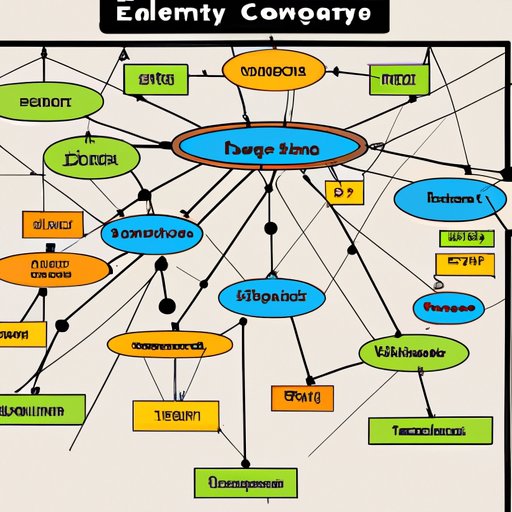Introduction
Concept mapping is an effective learning tool that can help students make sense of difficult or complex topics in science. By visually organizing information and relationships between concepts, concept maps provide a way for learners to better comprehend and retain knowledge. This article will explore what a concept map is, how it can help students learn, and provide guidance on creating concept maps to enhance understanding of science content.
What is a Concept Map and How Can it Help Students Learn?
A concept map is a diagram used to represent relationships between concepts and ideas. It is made up of nodes (or bubbles) containing individual concepts connected by arrows which signify the relationship between two concepts. Concept maps are used to visualize and organize information in an easy-to-understand format, making it easier for students to make connections between different concepts.
Concept maps can be used to enhance understanding of a particular topic by breaking down complex concepts into smaller, more manageable pieces. They can also help students identify relationships between concepts and make connections between seemingly unrelated ideas. By providing a visual representation of a topic, concept maps can make difficult concepts easier to comprehend and remember.
A Guide to Creating Concept Maps to Enhance Understanding of Science Content
Creating concept maps can help students gain a deeper understanding of science content. To begin, students should first identify the important concepts related to the topic being studied. These can include key terms, definitions, facts, and processes. Once the concepts have been identified, they should be placed into individual nodes or bubbles on the map.
Once the concepts have been identified, students should begin connecting them with arrows to show the relationships between them. For example, if one concept is “photosynthesis” and another is “chlorophyll”, an arrow could be drawn from “photosynthesis” to “chlorophyll” to indicate that chlorophyll is involved in the process of photosynthesis.
Once the concept map has been constructed, students can then use it to explore different topics related to the original concept. For example, if the original concept map was about photosynthesis, the student could then use the same map to explore other topics such as the role of light in photosynthesis or the products of photosynthesis.

How Concept Mapping Can Help Visualize Complex Science Concepts
Concept mapping can also be used to help visualize complex science concepts. By providing a visual representation of a concept, it can help students see the multiple dimensions of a concept and make connections between seemingly unrelated ideas. For example, a concept map of the water cycle could show how the sun, atmosphere, plants, and oceans all play a role in the cycle. This helps students to understand the interconnectedness of these concepts and how they all work together to form the water cycle.

The Power of Concept Mapping for Science Teachers
Concept mapping can also be a powerful tool for science teachers. It can be used as an assessment tool to gauge student understanding of a particular concept. Additionally, concept maps can be used to facilitate student engagement with science content. By providing a visual representation of a concept, it can help to break down difficult concepts and make them easier for students to understand.
Using Concept Maps to Make Science Easier to Understand
Concept maps can be used to help students make sense of complex science concepts. By breaking down difficult concepts into simple ideas, it can make it easier for students to comprehend and remember information. Additionally, by connecting related concepts and ideas, concept maps can help students identify relationships between different concepts and make connections between seemingly unrelated ideas.

An Introduction to Concept Mapping as a Tool for Science Learning
Concept mapping is an effective tool for helping students learn science and understand complex concepts. By providing a visual representation of a concept, it can help to break down difficult concepts and make them easier to comprehend. Additionally, it can be used to facilitate student engagement with science content and as an assessment tool. Understanding the benefits of concept mapping and exploring different types of concept maps can help teachers implement concept mapping in their classroom.
As Dr. Scott Smith, professor of educational psychology at the University of Texas at Austin, states: “Concept mapping is an invaluable tool for helping students make connections between different concepts and understand complex topics. It can help students visualize the relationships between concepts and make sense of difficult material.”
Conclusion
Concept mapping is an effective tool for helping students learn science and understand complex concepts. By visually representing relationships between concepts and ideas, concept maps can help students make connections between different concepts and grasp difficult topics. By providing guidance on creating concept maps, understanding the benefits of concept mapping, and exploring different types of concept maps, teachers can utilize this tool to help students better comprehend and retain knowledge.
(Note: Is this article not meeting your expectations? Do you have knowledge or insights to share? Unlock new opportunities and expand your reach by joining our authors team. Click Registration to join us and share your expertise with our readers.)
